Artist's aesthetic statement:
I respond to language viscerally, considering words as solid, tangible, almost like they can be felt on the tongue, savoured. The piece here is interested in the plastic, mutable qualities of language—the way different configurations change a word or letter's shape, density, and character not just its meaning. Treating language playfully, experimenting with textual and typographic arrangements visually and sonically, sets up funny, energetic non sequitur gag worlds that are (with any luck) intriguing, inviting, exuberant, surprising investigations of how language may behave, and what it can (or cannot) do.
—The following excerpts taken from a
slideshow presentation given by the eminent Monotypologist, Sweet Keaton.
Slide 1 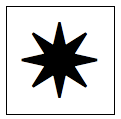
specimen 242.1: "X"
Rarely seen alive in its natural habitat, the Giant Monotype Sort (Archimonotypthis sortus) remains one of the most elusive alphabetic beasts to
roam the depths of the ocean floor.
Slide 2 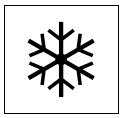
specimen 11: "d"
If in fact they roam at all. Furlongs in length and breadth, it is difficult to say whether such a
typographical mass would roam or wander or perform some variation of simpler
marine ambling. There have been rumours of an especially secretive species with
elbows . Even at mere speculation,
this cracks wide the possibilities of an inky scuttle
Slide 7 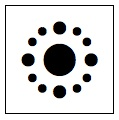
specimen 26a: "b"
This slide, enhanced from a grainy amateur photograph, shows a magnificent specimen, a brawny b, at the peak of its vigour.
This image remains one of the best modern examples of the beast ever captured by film or net. Note the
suggestion of camera awareness in the glimmer of the cheeky central eye. Although
at this distance it is difficult to distinguish the finer features, one would
be a printer's pawn to pass on a bet that it's the jaunty lidless wink of
emmetropia.
Slide 9 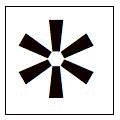
artist's rendering: "R"
The existence of such documentary proof, incidentally, though still snickered away as mere
Cryptographology by those jackals of the larger certification board in the Hall
of Typographologists, firmly establishes Archimonotypthis as the pinnacle of alphabetic action. Pixels and
resolution and grayscale be damned! I assure you, this is no fantastical
tapestry woven of textual tentacles.
Slide 11 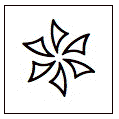
enhanced photograph: "j"
Some call it an obsession. A hearty fascination. A bit of fancy run amok. Regardless of how you name it, I
stand proud among the Giant Mono game hunters. We are few, but mighty, and will
not rest until we've captured, examined, and mounted every available specimen.
Note the flirtatious fanned flourish of the j
Slide 26 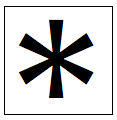
newspaper footage: "Q"
Revered in Victoria for its
rugged beauty and marine majesty, a group of enthusiasts, with the help of
monotypographers, erected a full-scale cast-iron model of a Q in the town square. So realistic are the pinwheeled linecurves that,
on some foggy nights, it is reported that an orphaned ucan be heard whimpering offshore in its shadow.
Slide 37 
lab specimen 26: "v"
Reviled in Eden, Ontario for what the townspeople have
deemed its "citified chic," a bylaw was recently passed prohibiting Giant
Monotypes from taking up residence in the town, thereby limiting them to a
small woodland area at the outskirts, should any ever develop landlegs, and
fancy a quiet country life.
Slide 44 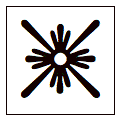
1659 sketch: "g"
enhanced to conform to
GMS hypothesis
It has been speculated that the "Sea Monk," first spotted in seventeenth century waters,
is actually one of the earliest sightings of Architeuthis, the great sister beast to the GMS.
Upon close examination of the sketches and seamen's journals of the time, one can plainly see that it is the spit of a gregarious g.
The creature's behaviour—the way it "repeatedly dipped under the surface at the starboard bow, only to reappear behind the vessel,"
and "charged at [the ship] from a great distance, then abandoned the attack just short of collision, squinted its plate-like eye,
apparently winking at the scrambling crewmen, before disappearing entirely from view"—unmistakably confirms the GMS hypothesis.
Flicker the possibility.
Slide 52 
partically decomposed "K"
On a small ice floe off the coast of Labrador, the nearly desiccated leathery body of a K
was found by a band of seal hunters. Three cod and a
partially digested Helvetica p were discovered in its stomach.
Slide 53 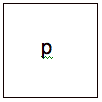
undigested "p"
GMS anatomy has been characteristically mysterious, since, once removed from water, specimens
shrivel at an alarming rate. Discovery of the K's stomach contents, preserved due to the salty low
temperatures of this climate, is both a blessing and a scientific curse, as it
has raised more questions than it has provided evidence to support any existing
anatomical hypotheses. The briers that this typographical tot has put us
through! I myself had always believed that the Monotype diet was restricted to lower order organisms—single-celled vowels and whatsuch.
A contemptuous camp of rabble-rousers attempting to tarnish the p-hypothesis by proposing that it was more likely a d
sparked a flurry of debate in Monotypology circles.
d
Poppycock.
Slide 60 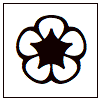
unconfirmed accent (archaic)
Once endemic to Mauritius, it is believed that the last amphibious Monotype Sort (the closest now-extinct cousin of Archimonotypthis) was clubbed to death in 1689 by a huddle of Dutch
explorers who, reportedly, mistook it for a witch.
Slide 77 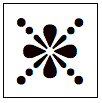
watercolour "h"
(personal archive)
Back when I was a novice, out on my first deep-sea expedition, I had a dalliance with a coquettish h. Oh, she played coy at first. Batted her symmetry.
Fluttered her mechanical florality. Then just as she was about to succumb to my
twittering fingertips, she disappeared beneath the surface, lost under the depths of
three thousand meters of saline obscurity. Biggest regret of my life.
Slide 84 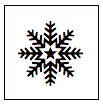
sensuous "f"
my precious fandancer
In response to Dr. Hendrix Greenjeans' now largely discredited 1982 article, "Why Archimonotypthis is Deaf," I weigh in, "preposterous."
I once glimpsed a dashing specimen
halt abruptly alongside my vessel just as I began to play the opening tickle of Ravel's Bolero on my violin. After a moment of breathtaking
stillness, she began to quiver delight at the rolling melody. Swishswirled tympanic elegance, trembling ecstatic under the
vibrato of my bow. With an extended arm hovering mid-air, she demonstrated a thrilling intuition for harmony.
A cochlear marvel, she was. With the titillating calligraphy of the fandancer.
Slide 89 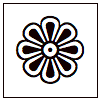
bewitching "a"
Though I can't be certain, adrenaline being what it is, I believe I once made an indelible
impression on a voluptuous a. The way she let me measure her curvaceous
petals, biopsy her internal inksack... She shivered her jellied moist muscles.
Fluted her coiled corpuscles. Glistened a pinprick pupil. Would that she could
quill me a lettre d'amour with ink from her own veins.
Slide 102 
tantalizing "O"
I once tasted a Monotype O that had washed ashore on an unpopulated beach.
Sautéed a thin sliver off the tentacle in garlic and olive oil. It was bitter
heaven.















